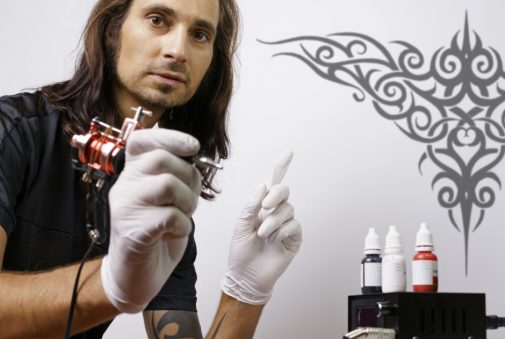31-year-old man’s tattoo leads to flesh-eating bacteria and death

Tattoo safety is in the spotlight after a 31-year-old man died from a flesh-eating bacteria after he ignored instructions not to swim in open water within two weeks of being tattooed.
According to a study published in BMJ Case Reports, the man swam in the Gulf of Mexico just five days after getting a tattoo on his leg. Days later, he came down with a fever and chills and developed a rash on his leg. He was admitted to a hospital where doctors later determined flesh-eating bacteria infected his tattoo, which then caused him to develop sepsis and suffer organ failure.
Despite aggressive treatment, the man’s condition deteriorated over time and he died two months after being admitted to the hospital.
“The lesson isn’t that you shouldn’t get a tattoo,” said Dr. Nicholas Hendren, the lead author of the report. “It’s that you have to take care of it. If you get stitches you probably wouldn’t go swimming in a pond or lake or the ocean. And you shouldn’t with a tattoo for at least one or two weeks.”
Dr. Adam Treitman, an infectious disease specialist at Advocate Christ Medical Center in Oak Lawn, Ill. echoes the report’s conclusion on the importance of following aftercare instructions.
“A new tattoo is essentially an open sore on your skin, which means it’s more susceptible to infections and needs to be cared for so it properly heals,” says Dr. Treitman. “People need to be aware of the potential health risks they face before they decide to get tattooed, including bacterial infections, allergic reactions and blood borne diseases.”
Just last month, the FDA released a consumer update on their website with new information on the dangers of tattoos and what people need to consider before they decide to get one.
The update revealed people can get infections as a result of unsterile equipment as well as tainted ink.
“While you can get serious infections from unhygienic practices and equipment that isn’t sterile, infections can also result from ink that was contaminated with bacteria or mold,” said Dr. Linda Katz, director of the FDA’s Office of Cosmetics and Colors.
While consumers can do their best to choose a tattoo shop that looks sanitary, there is no surefire way to know whether the ink you will be injected with is safe or not.
“An ink can be contaminated even if the container is sealed or the label says the product is sterile,” Dr. Katz said.
If you decide to get a tattoo, the FDA strongly advises you to “think before you ink” and review your state and local laws on tattooing and only select a tattoo shop that complies with all laws.
Related Posts
Comments
About the Author
Julie Nakis, health enews contributor, is manager of public affairs at Advocate Children's Hospital. She earned her BA in communications from the University of Iowa – Go Hawkeyes! In her free time, she enjoys spending time with friends and family, exploring the city and cheering on the Chicago Cubs and Blackhawks.

















